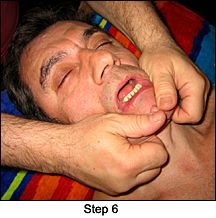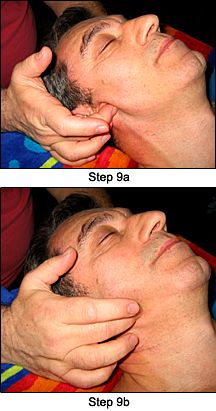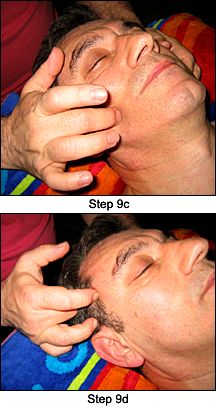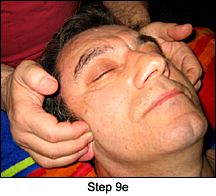|
As a result of a tremendous exposure to stress, the development of temporomandibular joint (TMJ) disorders has reached pandemic proportions. TMJ sufferers experience high-intensity headaches, difficulty with chewing, painful joint clicking and popping, and other symptoms. With the progression of the pathology, individuals may even develop sleep disorders.
TMJ Anatomy: The TMJ is formed by the temporal and mandibular bones. Attached to the mandibular condyle is a fibrocartilage meniscus or articular disk, which allows the mandible to move smoothly. The masticatory muscles (temporalis, masseter, lateral pterygoid, and medial pterygoid) are responsible for movement and stabilization of the TMJ.
Bruxism: Due to stress, people often develop bruxism. Bruxism is a pathological clenching and grinding of teeth that usually occurs during sleep. Bruxism is caused by the hyperactive contraction of the masticatory muscles. Imagine any other muscles in our support and movement system kept under tight contraction for seven hours. Pathological hypertonus in these muscles will be formed, followed by restriction of range of motion, trigger point development, and other symptoms. With time, hypertonic condition in the masticatory muscles leads to the development of osteoarthritis in the TMJ, including negative effects on the articular meniscus. In such a case, the above-mentioned TMJ pathology starts producing severe headaches and painful "clicks."
Massage therapy and Post-Isometric Relaxation Techniques for TMJ Disorders: Massage therapy should be focused toward the reduction of tension in the masticatory muscles, releasing tension in fascia, and elimination of trigger points. Post-isometric relaxation is an extremely important tool for the restoration of the range of motion. Massage therapy steps for TMJ:
Client is first positioned face down on the stomach
1. With the tips of the fingers, bilaterally, in circular motion, massage the neck area for 41/2 to 5 minutes.

2. Place the tips of the fingers around the occipital bone. Under gradually increasing pressure, perform massage on the insertion of the cervical muscles into the skull for 31/2 to 4 minutes.

3. Place both fists on top of the trapezius. Under gradually increasing pressure, perform massage on top of the trapezius for 30 seconds to 1 minute.

4. Ask the client to relax his/her jaw to the extent possible. With the top of the fingers, bilaterally, massage all the masticatory muscles for 5 to 7 minutes.

Client is then positioned face up on the back
5. Ask client to open his/her mouth as wide as possible. Place the thumb on the chin. With the other hand's fingertips, perform massage on the masticatory muscles underneath, stretching for 5 to 7 minutes. Massage each side separately, spending no more than 3 to 4 minutes on the unaffected side.

6. Ask client to open mouth approximately 15 degrees. Place both thumbs on the chin. Ask the client to close the mouth while you provide resistance. Hold the masticatory muscles under isometric tension, for approximately 30 seconds.

7. With exhalation, passively stretch all masticatory muscles.

8. Repeat steps six and seven twice more.
9. Trigger point therapy must be applied to every localization found.



Mechanisms of Trigger-Point Therapy: A trigger point is a localization of pain. It can be found in muscles, periosteum, tendon attachment points to bone, as well as near muscle-tendon junctions. Even given the fact that most typical trigger points are developed in the middle of the muscle belly, at the place of nerve-muscle junction, I recommend two ways for discovery of trigger points: First, ask the patient to point to the exact localization of pain (trigger point); second, at the time of performing kneading and myofascial tissue release, ask your client to let you know if they feel a sharper level of pain under your fingers, which will be the trigger point.
The main mechanism of trigger point therapy is ischemic compression. Automatically, we can assume that in the area of the trigger point, arterial blood supply is significantly decreased. By gradually compressing the trigger point and reaching the threshold of pain, we additionally decrease this blood supply to the point. After 10 seconds of this ischemic compression, we ask our client to report their ability to tolerate additional compression (please do not overdo this pressure; stop at a pressure that your client indicates is sufficient, and do not increase it.
Do not increase the pressure if muscles demonstrate protective contraction to the pain sensation.) After 20 additional seconds of compression, quickly withdraw your fingers. While performing ischemic compression of trigger points, arterial blood will accumulate around the compressed point. With the fast withdrawal, arterial blood will rush to the area of the trigger point, and a vasodilation reflex will be awakened.
Mechanism of Post-Isometric Relaxation: One of the factors responsible for the restriction of range of motion is an energetic unbalance inside of the muscles, which is expressed in the form of different tension levels in the fibers of the same muscle. Imagine that in the same muscle, a portion of the fibers is in pathological hypertonus and the rest is in normal tonus. Every movement will increasingly overload the contracted part of the fibers.
This, of course, will cause a higher level of pathological accumulation of tension. At the time of isometric contraction, the fibers of the muscle are actively stretched, which leads to a balancing of the tonus between different fibers in the muscle. After 30 seconds of isometric tension following post-isometric relaxation (stretching), Golgi organs are activated, which in turn will contribute to normal tonus in muscles. In such a case, the muscle will be able to produce adequate energy during contraction and relaxation. The above-mentioned positive changes in muscular tissue will help to restore normal range of motion.
Full-Body Stress-Management Massage: As mentioned before, stress is the main cause of the development of bruxism and TMJ disorders; therefore, it is very important to those who suffer from TMJ disorders (in addition to the protocol which I offer you in this article) to receive full-body stress-management massage. From my experience, the phenomenon of bruxism can be reduced within five full-body stress-management massage treatments given on a weekly basis. Elimination of bruxism is an extremely important factor that will allow the masticatory muscles to be restored to normal metabolism and prevent re-accumulation of tension in the muscles.
| 
